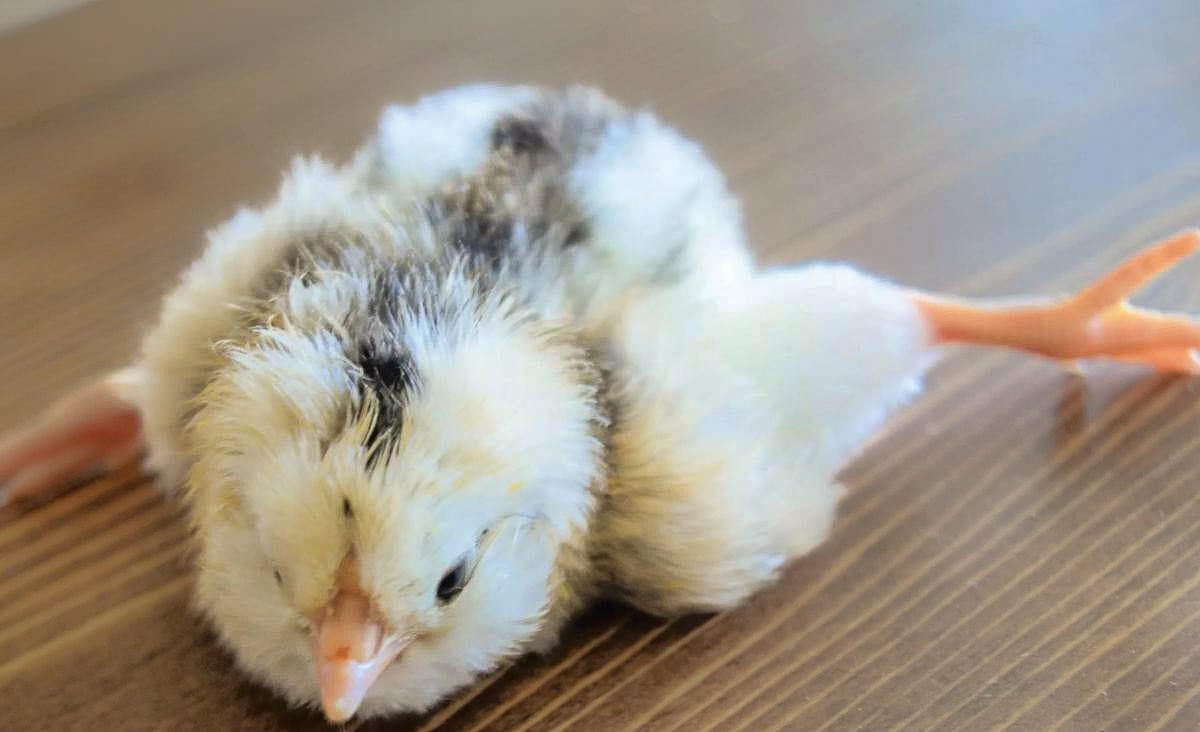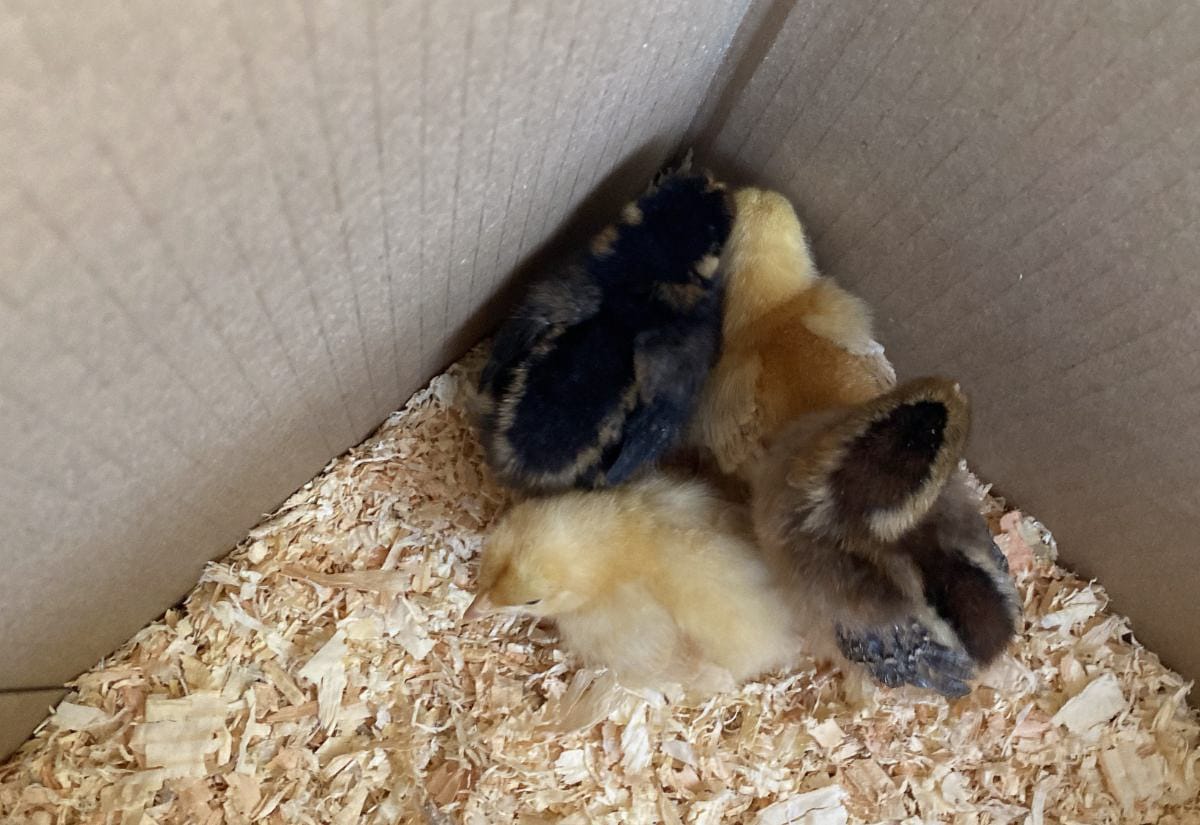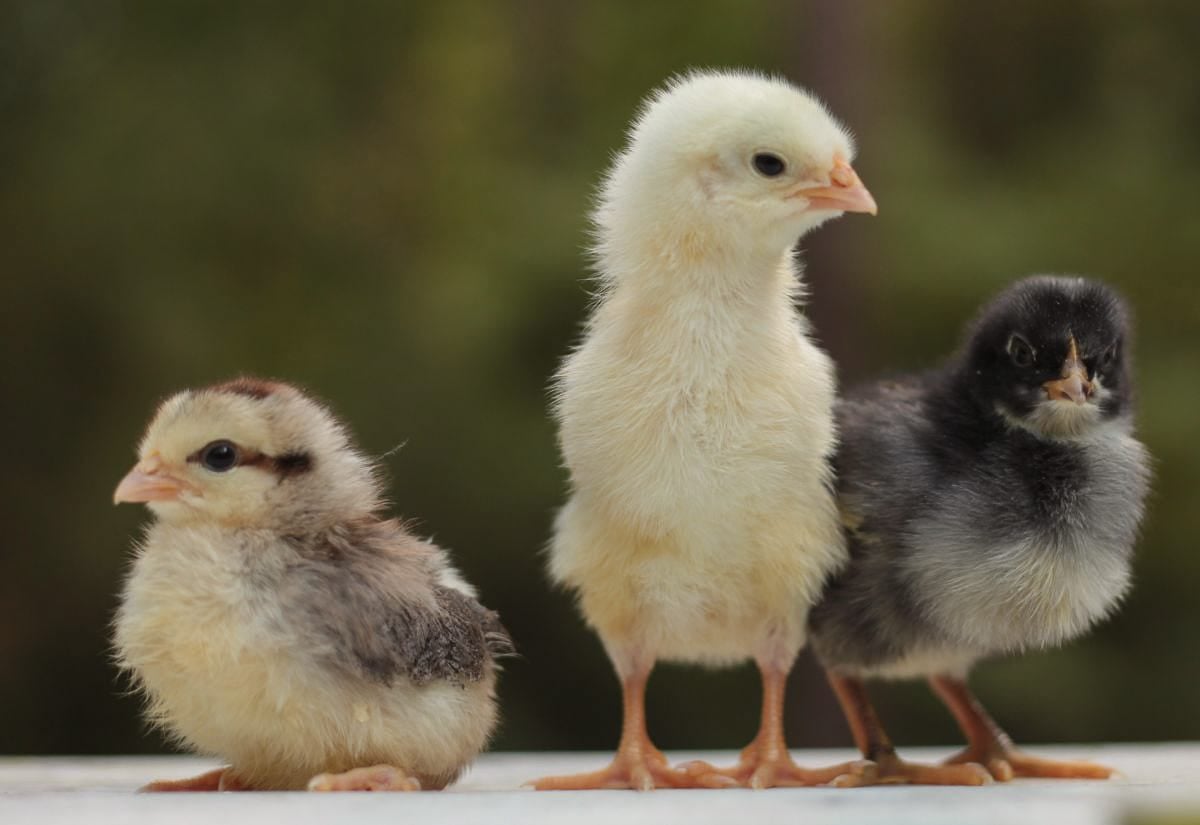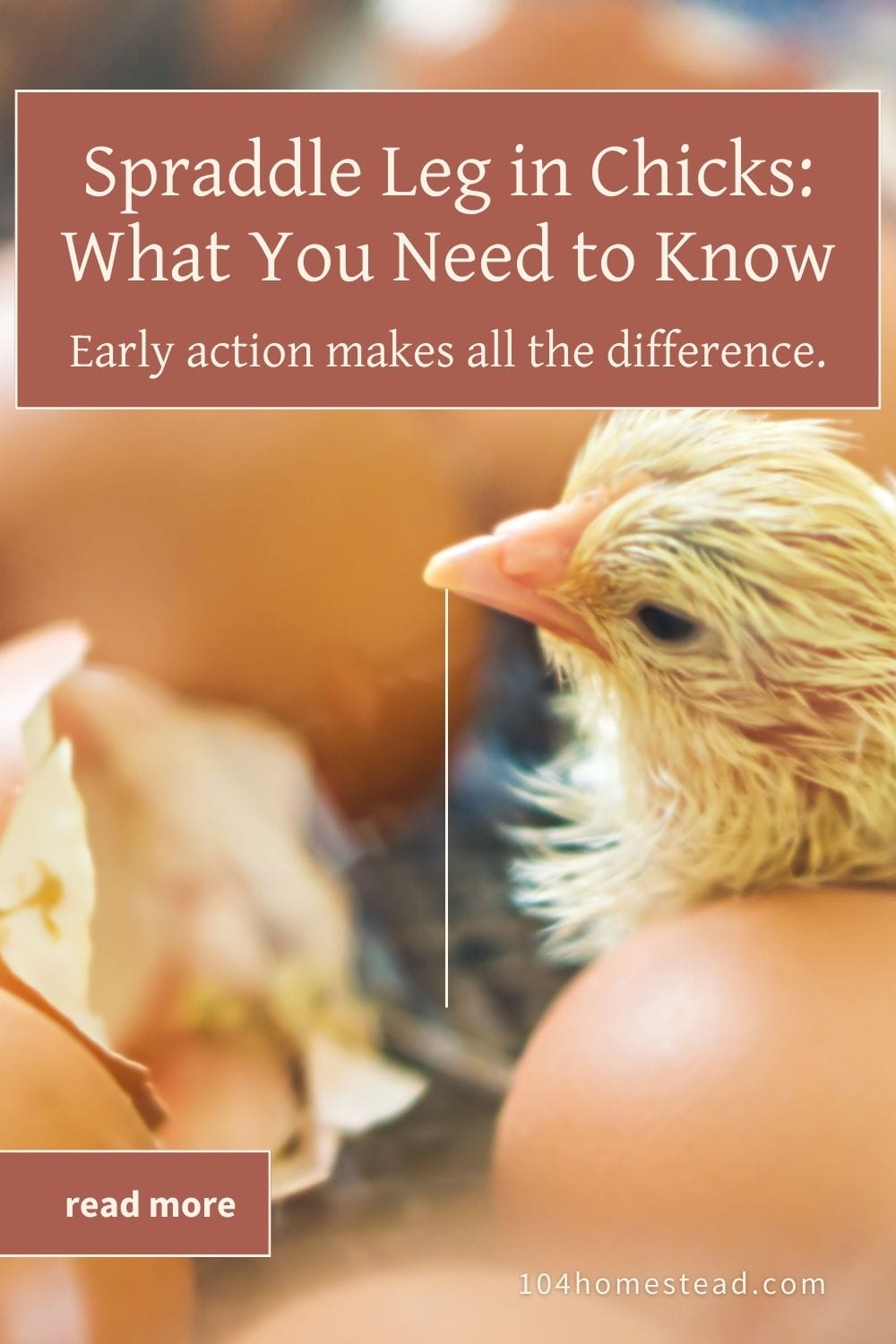When Is It Too Late to Fix Spraddle Leg in Chicks?
Learn when spraddle leg in chicks can still be fixed, what signs to watch for, and how to give your chick the best chance at recovery.

You open the brooder and your heart sinks… one of your newly hatched chicks is flat out on the floor, legs splayed to the sides, totally unable to stand. That’s spraddle leg (or splay leg), and it’ll stop you in your tracks the first time you see it. The first time it happened here, I panicked and thought the chick was a goner.
But here’s the good news: in many cases, it’s fixable if you catch it early.
If you’re here asking “When is it too late to fix spraddle leg?”, let’s break down what’s possible, what signs to look for, and what to do next.
What Is Spraddle Leg?
Spraddle leg is when a chick’s legs slide out to the sides instead of staying tucked under like they should. Instead of walking or standing upright, the chick ends up flopping around or stuck in a heartbreaking split.
A few things can cause it, and I’ve seen all of these play a role at one time or another:
- Slippery surfaces in the brooder (like newspaper, cardboard, or smooth plastic). We use this type of rubber shelf liner in our brooders and on the incubator floor to help prevent spraddle leg from the start.
- A rough hatch that left the chick weak or mispositioned
- Injury during or shortly after hatching
- Nutritional deficiencies in the parent birds (less common)
Hatch day can be stressful and a tricky hatch is one possible cause of spraddle leg. Here’s what to watch for and what you can do if things don’t go smoothly.
If you intervene quickly, the chick’s tendons and muscles can usually be gently guided back into place while they’re still developing.

Skip the cardboard box or newspaper as brooder flooring. Instead, use paper towels, puppy pads, pine shavings, or rubber shelf liner to give chicks traction right from the start.
When Is It Too Late to Fix Spraddle Leg?
Here’s the short answer: you’ve got the best shot if you act within the first 1–3 days after hatching. I’ve had the best luck bracing on day 1 or 2. By day 4, it’s hit or miss.
That’s when joints and muscles are still flexible, and chicks are resilient. By day 4 or 5, you may still see progress with bracing and TLC, especially if the chick has been eating and scooting around.
But once a chick hits a week old, things get tougher:
- The legs may become stiff or swollen
- Sores can form from dragging or pressure
- Muscles and joints start to harden into the wrong position
At that point, it’s often too late for a full recovery, but that doesn’t mean all hope is lost. Some chicks still improve with extra help, especially if they’re otherwise alert and eating.
If It’s Too Late to Fully Fix
At that point, the focus shifts. You just want the chick to be as comfortable and independent as possible. Here’s what that can look like:
- I’ve had luck with fleece scraps, rubber shelf liner, or even padded puppy pads—anything that cushions and gives traction
- Shallow food and water dishes placed close to the chick
- Padded slings or cups to help the chick sit upright and relieve pressure
- Gentle therapy to reposition the legs for short periods (only if it doesn’t cause pain)
- Keep an eye out for signs of pain, and be honest with yourself about whether the chick is really okay
If the chick can’t support itself and seems to be suffering, euthanasia may be the kindest choice. But some chicks adapt better than you’d expect with just a little help.

Signs There’s Still Time to Help
Not sure if it’s too late? Here’s what gives you a better shot at success:
- The chick is alert, eating, and drinking
- It can move or scoot around, even if not standing yet
- You can gently reposition the legs underneath without resistance
I’ve seen chicks with pretty bad splay bounce back quickly once braced, especially when caught by day 2 or 3. Even a chick that looks rough may surprise you if it’s otherwise strong.
How to Fix Spraddle Leg (and When to Use Each Method)
If you’ve decided it’s worth trying to help your chick recover, the next step is choosing the right support method. Some fixes work best for smaller breeds, while others are better suited for standard chicks or ducklings.
My Favorite Fix for Tiny Chicks
For small birds like Coturnix quail or bantam chickens, I use the drinking glass method. It supports the chick’s body while gently encouraging the legs to stay in the right position without tape, stress, or complicated bracing.
You can read my full step-by-step post here. I reach for this method first with my quail. It’s simple, and I’ve seen chicks stand on their own in just a couple of days.
For Bigger Chicks and Ducklings
For standard-size chicks, I recommend the adhesive bandage method, a classic that still works well. This video from The Childs’ Family Experience shows you exactly how it’s done.
Don’t be surprised if your chick screams like it’s being murdered while you brace it. They calm down fast once it’s in place. I’ve used both in my own brooders, and honestly, it just comes down to the chick’s size and what you have on hand.
What If the Chick Can’t Be Fixed?
If you’ve tried everything and the chick still can’t support itself, you’re facing a tough decision.
Some folks choose to care for a disabled chick in a separate pen, especially if the bird seems happy and otherwise healthy. Others make the call to euthanize if the bird is suffering or can’t thrive.
I’ve had to make both choices over the years, and neither is easy. What matters most is making sure the chick isn’t suffering.
A Few FAQs About Spraddle Leg
If you’re dealing with a chick that has spraddle leg, you’re definitely not the first and you’re not alone. Here are a few of the most common questions I get asked (and what I’ve learned from experience).
Pin this post, because trust me, spraddle leg pops up when you least expect it.

Spraddle leg can feel overwhelming the first time you see it, but most cases respond well to quick, gentle intervention. The sooner you act, the better your odds of seeing that little one standing tall.
And if you’re past the window for full correction, it’s not a failure. It just means you’re learning and next time, you’ll be ready to jump into action.
If you’ve got little ones helping with chick care, this kid-friendly guide to hatching chicks is a fun, confidence-building read.




